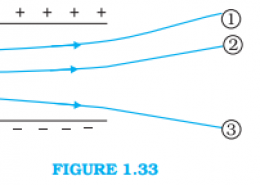Class-12th Physics, CBSE and UP Board Electric Charges and Fields, Chapter-1, Exercise -1, Additional Exercise, Q-1.34 NCERT Solutions for Class 12th Physics
Home/class 12th science
Discussion Forum Latest Questions
Ashok0210
Asked: In: Class 12 Physics
Class-12th Physics, CBSE and UP Board Electric Charges and Fields, Chapter-1, Exercise -1, Additional Exercise, Q-1.32 NCERT Solutions for Class 12th Physics
Ashok0210
Asked: In: Class 12 Physics
Class-12th Physics, CBSE and UP Board Electric Charges and Fields, Chapter-1, Exercise -1, Additional Exercise, Q-1.1 NCERT Solutions for Class 12th Physics
Ashok0210
Asked: In: Class 12 Physics
Class-12th Physics, CBSE and UP Board Electric Charges and Fields, Chapter-1, Exercise -1, Additional Exercise, Q-1.30 NCERT Solutions for Class 12th Physics
